Download Call of Duty Mobile Season 11 1.0.50 free on android

- Android4.3+
- Version: 1.0.50
- 3.1 GB
Updated to version1.0.50!
Today we discuss How to Buy a Call of Duty Mobile Season 10.
When it comes to gaming, having the right equipment can make all the difference. A top-quality monitor is essential for immersive gameplay, especially for fast-paced games like Call of Duty. With so many options available on the market, choosing the perfect monitor can be overwhelming.
This guide aims to simplify your buying process by outlining key features to look for and recommendations to enhance your gaming experience.
When it comes to gaming, having the right equipment can make all the difference. A top-quality monitor is essential for immersive gameplay, especially for fast-paced games like Call of Duty Mobile Season 10. With so many options available on the market, choosing the perfect monitor can be overwhelming. This guide we discuss How to Buy a Call of Duty Mobile Season 10 aims to simplify your buying process by outlining key features to look for and recommendations to enhance your gaming experience.
Understanding Monitor Specifications
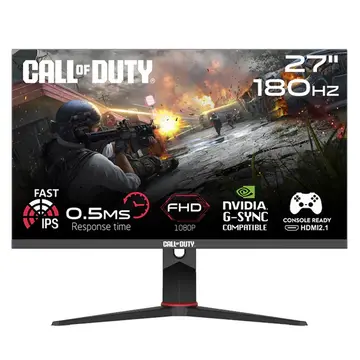
Before diving into the specifics of gaming monitors, it’s crucial to understand the basic specifications that will affect your gameplay. Key terms include:
- Resolution: The clarity of the image displayed on the screen. Common resolutions include 1080p (Full HD), 1440p (QHD), and 4K (UHD). For Call of Duty, a resolution of 1440p or higher is recommended to capture intricate details in graphics.
- Refresh Rate: Measured in Hertz (Hz), this indicates how many times the screen updates per second. A higher refresh rate (e.g., 144Hz or 240Hz) leads to smoother visuals and a more responsive gaming experience, crucial for fast-paced shooting games.
- Response Time: This refers to how quickly a pixel can change from one color to another, usually measured in milliseconds (ms). A lower response time (1ms to 3ms) helps reduce motion blur and ghosting, which is essential during intense gameplay moments.
How to Buy a Call of Duty Mobile Season 10 : Choosing the Right Size
The size of your monitor significantly impacts your gaming experience. For Call of Duty Mobile Season 10, consider a monitor that ranges from 24 to 32 inches. A larger screen can enhance immersion, allowing you to see finer details and increasing your field of view. However, ensure that your gaming setup can accommodate the monitor size and that you can comfortably view the entire screen from your seating position.
Panel Types: IPS vs. TN vs. VA
Monitors come with different panel types, each offering unique advantages:
- IPS (In-Plane Switching): Known for their vibrant colors and wide viewing angles, IPS panels provide an excellent visual experience. They are ideal for players who appreciate stunning graphics and will also perform well in competitive gaming.
- TN (Twisted Nematic): These monitors typically offer faster response times and higher refresh rates, making them suitable for competitive gaming. However, color reproduction and viewing angles may not be as impressive as IPS.
- VA (Vertical Alignment): VA panels provide deep blacks and high contrast ratios, making them great for immersive gameplay. They fall somewhere between IPS and TN in terms of response time and color accuracy.
Consider G-Sync or FreeSync Technology
If you want to avoid screen tearing and stuttering during gameplay, consider a monitor that supports G-Sync (NVIDIA) or FreeSync (AMD) technology.
These features synchronize the monitor’s refresh rate with your graphics card’s output, resulting in a smoother gaming experience. This can be particularly beneficial during fast-paced games like Call of Duty, where every millisecond counts.
Aesthetic Appeal and Ergonomics
While performance is key, the monitor’s design and ergonomics should not be overlooked. Look for a monitor with a sleek design that complements your gaming setup. Additionally, an adjustable stand that allows you to change the height, tilt, and rotation of the monitor can enhance your comfort during long gaming sessions.
Connectivity Options
Ensure that the monitor you choose has a variety of connectivity options. HDMI and DisplayPort are standard for high-quality video output. If you plan to connect multiple devices, look for a monitor with several ports, including USB ports for peripherals and headsets. This will enhance your gaming flexibility and convenience.
Setting a Budget
Gaming monitors come in a wide price range, so setting a budget is essential. While high-end monitors offer advanced features, you can still find quality options at more affordable prices. Prioritize the features that matter most to you, such as refresh rate and resolution, to help narrow down your choices without overspending.
Reading Reviews and Doing Research
Before making a final decision, take the time to read reviews and conduct thorough research on the monitors you are considering. User experiences can provide valuable insights into the performance, reliability, and durability of the monitor. Look for reputable tech websites, gaming forums, and customer reviews to gather a comprehensive understanding of the product.
Understanding Monitor Specifications: Key Features for Gamers
When it comes to gaming, having the right monitor can make all the difference. Not only does it enhance your visual experience, but it can also improve your overall gameplay performance.
However, with a plethora of options available on the market, understanding monitor specifications is crucial for gamers looking to make an informed decision. In this article, we’ll explore the key features that define monitor specifications and what to look for when selecting a monitor tailored to your gaming needs.
Resolution: Clarity and Detail
Resolution refers to the number of pixels that make up the display, usually represented as width x height. Common resolutions include 1080p (Full HD), 1440p (Quad HD), and 4K (Ultra HD). A higher resolution means more pixels, which translates to sharper images and finer details.
For gamers, opting for a higher resolution monitor can enhance the visual experience, especially in graphically intensive games. However, keep in mind that higher resolutions often require more powerful hardware to run smoothly.
Refresh Rate: Smoothness in Motion
The refresh rate, measured in Hertz (Hz), indicates how many times per second the monitor updates the image on the screen. For gaming, a refresh rate of 60Hz is standard, but many gamers prefer 144Hz or even 240Hz for a smoother gameplay experience.
Higher refresh rates reduce motion blur and provide a competitive edge in fast-paced games. If you play FPS (First-Person Shooter) games or other fast-paced genres, investing in a monitor with a higher refresh rate is essential.
Response Time: Reducing Lag
Response time measures how quickly a pixel can change from one color to another, typically measured in milliseconds (ms). Lower response times are crucial for gamers as they reduce ghosting and motion blur.
Monitors with a response time of 1ms to 5ms are ideal for gaming, as they ensure that fast-moving objects appear clear and defined. Look for monitors with technologies like TN (Twisted Nematic) or IPS (In-Plane Switching) panels, which often provide better response times.
Panel Type: Understanding the Differences
Monitors come in various panel types, each with its own set of characteristics:
- TN Panels: These are known for their fast response times and high refresh rates, making them popular among competitive gamers. However, they often sacrifice color accuracy and viewing angles.
- IPS Panels: These offer better color reproduction and wider viewing angles, making them suitable for gamers who also use their monitors for content creation or multimedia consumption. While they may have slightly slower response times compared to TN panels, the difference is minimal for most gaming scenarios.
- VA Panels: Known for their high contrast ratios, VA panels provide deep blacks and vibrant colors. However, their response times can be slower than TN and IPS panels, making them less ideal for fast-paced gaming.
Choosing the right panel type depends on your gaming preferences and whether you prioritize speed or visual quality.
Connectivity: Ensuring Compatibility
Call of Duty Mobile Season 10 A monitor’s connectivity options are essential for ensuring compatibility with your gaming setup. Look for monitors that offer multiple connection types, such as HDMI, DisplayPort, and USB-C. These connections allow you to hook up your gaming console or PC seamlessly. Additionally, consider monitors with built-in USB hubs, which can help reduce cable clutter and provide easy access for peripherals.
Adaptive Sync Technologies: Enhancing Gameplay
Adaptive sync technologies, such as G-Sync (NVIDIA) and FreeSync (AMD), are designed to eliminate screen tearing and stuttering by synchronizing the monitor’s refresh rate with the GPU’s frame rate. This ensures smooth gameplay and enhances the overall Call of Duty Mobile Season 10 experience.
If you’re using a compatible graphics card, investing in a monitor that supports these technologies can significantly improve your gaming performance.
Size and Ergonomics: Finding the Perfect Fit
Monitor size is subjective and depends on personal preference as well as the space available in your gaming setup. While larger monitors (27 inches and above) can provide an immersive experience, they may require more desk space and a higher resolution to maintain image quality.
Additionally, consider ergonomic features such as adjustable stands, VESA compatibility, and blue light filters, which can enhance comfort during long gaming sessions.
Price vs. Performance: Finding the Right Balance
When choosing a gaming monitor, it’s essential to balance price and performance. High-end monitors with advanced features can be expensive, but they often provide the best gaming experience.
However, it’s possible to find great value options that offer decent performance at a lower price point. Determine your budget and prioritize the features that matter most to your gaming style, ensuring you make an informed investment.
Refresh Rates: What’s Best for Call of Duty Mobile Season 10 Gaming?
When it comes to gaming, particularly fast-paced shooters like Call of Duty Mobile Season 10, every detail matters. One of the most critical factors that can influence your gameplay experience is the refresh rate of your monitor.
Understanding refresh rates can help you make informed decisions about your gaming setup, ensuring you have the competitive edge needed to excel in your matches. In this article, we’ll delve into what refresh rates are, their impact on gaming, and what’s best for Call of Duty.
What is Refresh Rate?
The refresh rate is defined as the number of times a display updates with new information per second, measured in Hertz (Hz). For instance, a monitor with a refresh rate of 60 Hz will refresh the image 60 times per second.
Higher refresh rates mean smoother motion and less blur, which is especially beneficial in fast-paced games like Call of Duty, where every millisecond counts.
Why is Refresh Rate Important for Gaming?
The importance of refresh rate cannot be overstated in the realm of competitive gaming. A higher refresh rate provides a more responsive gaming experience. Here’s how it impacts your gameplay:
- Smoother Gameplay: A higher refresh rate allows for a smoother visual experience. This is crucial in fast-moving games like Call of Duty, where quick reactions can mean the difference between victory and defeat.
- Improved Responsiveness: Gamers often prefer higher refresh rates because they can respond more quickly to in-game actions. This responsiveness can enhance overall gameplay and improve aiming accuracy.
- Reduced Motion Blur: Higher refresh rates help reduce motion blur, allowing players to see fast-moving objects more clearly. This clarity is essential in a game where players must track moving enemies or projectiles.
Standard Refresh Rates in Gaming Monitors
Monitors typically come with a range of refresh rates. Here are the most common ones:
- 60 Hz: This is the standard refresh rate for most monitors. While adequate for casual gaming and general use, it may not provide the best experience for fast-paced games like Call of Duty.
- 120 Hz: This refresh rate offers a noticeable improvement over 60 Hz, providing smoother motion and better responsiveness. It is a popular choice among gamers who want an enhanced experience without breaking the bank.
- 144 Hz: A common choice for serious gamers, 144 Hz monitors deliver exceptional performance, making them ideal for competitive gaming. Call of Duty players will benefit from the increased smoothness and responsiveness.
- 240 Hz and Above: Monitors with refresh rates of 240 Hz or higher are becoming increasingly popular among professional gamers. These monitors provide the highest levels of performance, allowing for ultra-smooth gameplay and incredibly quick response times.
What’s Best for Call of Duty Mobile Season 10?
Choosing the right refresh rate for playing Call of Duty depends on several factors, including your gaming style, hardware capabilities, and personal preference. Here are some recommendations:
- Casual Gamers: If you play Call of Duty casually and don’t require the fastest response times, a 120 Hz monitor can provide a good balance of performance and affordability. This refresh rate will enhance your gaming experience without overwhelming your budget.
- Competitive Gamers: For those who play Call of Duty Mobile Season 10 competitively, investing in a 144 Hz or higher monitor is advisable. The increased refresh rate will significantly improve your gameplay experience, allowing for quicker reactions and smoother visuals.
- Professional Gamers: If you’re a professional or aspiring professional player, consider monitors with 240 Hz or higher refresh rates. These monitors will give you the edge over your competition, enabling you to react faster and track targets more efficiently.
The Importance of Response Time in Gaming Monitors
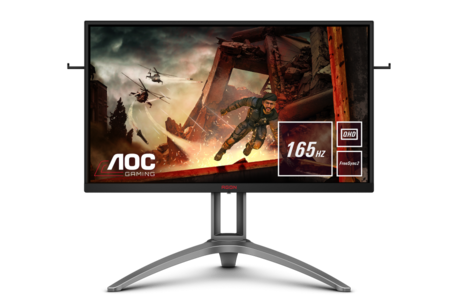
In the world of gaming, every millisecond counts. The difference between victory and defeat can hinge on how quickly your monitor can display the actions happening in-game.
This is where the response time of a gaming monitor plays a pivotal role. Understanding the significance of response time not only enhances your gaming experience but also helps you choose the right equipment for your gaming setup.
What is Response Time?
Response time refers to the time it takes for a pixel to change from one color to another and back again. It is typically measured in milliseconds (ms).
For gamers, a lower response time is crucial because it means less motion blur and ghosting during fast-paced scenes, leading to a more fluid and immersive gaming experience. A monitor with a fast response time can keep up with the rapid movements typical in modern video games, allowing players to react quickly and accurately.
Why Does Response Time Matter?
In competitive gaming, where every fraction of a second can make a difference, the importance of response time cannot be overstated. A monitor with a slow response time may display blurriness or trailing effects when objects move quickly across the screen.
This lag can disrupt your focus, making it harder to track opponents or react to sudden changes in the game environment. On the other hand, a monitor with a low response time can provide clearer visuals, improving your overall performance and enjoyment.
The Impact of High Response Times
Monitors with high response times, typically over 5ms, can introduce visual artifacts like ghosting. This effect occurs when the previous image remains on the screen for too long, causing confusion and reducing clarity.
In fast-paced games, such as first-person shooters or racing titles, this can lead to missed shots or poor decision-making. Thus, opting for a gaming monitor with a response time of 1ms to 3ms is recommended for competitive gamers seeking the best performance.
Response Time vs. Refresh Rate: What’s the Difference?
While response time is crucial, it is important to understand that it is not the only factor influencing gaming performance. Refresh rate, measured in hertz (Hz), determines how many times per second the screen refreshes the displayed image.
A high refresh rate (like 144Hz or 240Hz) allows for smoother gameplay and can enhance the gaming experience. However, without a low response time, the benefits of a high refresh rate may be diminished. For the best results, gamers should look for monitors that offer both low response times and high refresh rates.
Finding the Right Balance
When selecting a gaming monitor, it’s essential to find a balance between response time, refresh rate, and resolution. While a low response time is critical, it should not come at the expense of other important features.
Gamers should consider their gaming style and the types of games they play most frequently. For example, if you are primarily into fast-paced shooters, prioritize low response times. Conversely, if you enjoy visually stunning RPGs, you might place more emphasis on resolution and color accuracy.
The Role of Technology in Response Time
Modern gaming monitors utilize various technologies to achieve impressive response times. TN (Twisted Nematic) panels are known for their fast response times, making them popular among competitive gamers. However, they may not offer the best color reproduction.
IPS (In-Plane Switching) panels have improved response times in recent years, offering better color accuracy and wider viewing angles, making them suitable for gamers who appreciate stunning visuals without sacrificing performance.
VA (Vertical Alignment) panels can provide deeper blacks and better contrast ratios but typically have slower response times than TN panels.
Panel Types Explained: IPS vs. TN vs. VA
When it comes to choosing a display for your computer or gaming setup, understanding the different panel types is crucial. The performance, color accuracy, viewing angles, and response times can vary significantly depending on the panel technology used.
In this article, we will delve into the three primary panel types: In-Plane Switching (IPS), Twisted Nematic (TN), and Vertical Alignment (VA). By the end, you will have a clearer understanding of which panel type is best suited for your needs.
1. In-Plane Switching (IPS)
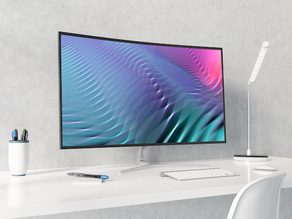
In-Plane Switching (IPS) panels are renowned for their superior color accuracy and wide viewing angles. This technology allows liquid crystals to move parallel to the glass substrates, resulting in vibrant colors and consistent brightness. IPS panels are particularly favored by graphic designers, photographers, and anyone who requires precise color representation.
Advantages of IPS Panels
- Excellent Color Reproduction: IPS panels can display a wider range of colors compared to other panel types. They offer true-to-life colors, making them ideal for tasks requiring meticulous color grading.
- Wide Viewing Angles: With an IPS display, colors remain consistent even at extreme angles. This means that whether you’re sitting directly in front of the screen or off to the side, the picture quality remains largely unchanged.
- Better Contrast Ratios: While not as high as VA panels, IPS technology still provides decent contrast, contributing to an overall better viewing experience, especially in well-lit environments.
Disadvantages of IPS Panels
- Slower Response Times: Although newer IPS panels have made strides in reducing response times, they can still lag behind TN panels, making them less suitable for fast-paced gaming.
- Higher Cost: IPS panels are generally more expensive than TN panels due to their advanced technology and superior image quality.
2. Twisted Nematic (TN)
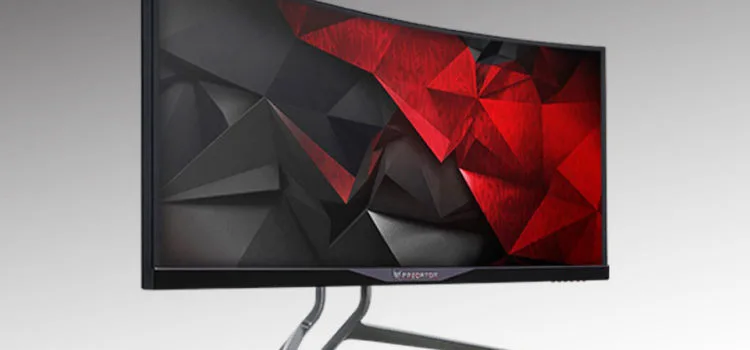
Twisted Nematic (TN) panels have been around for quite some time and are known for their affordability and high refresh rates. They achieve faster response times by twisting liquid crystals, which makes them a popular choice for competitive gamers.
Advantages of TN Panels
- Fast Response Times: TN panels typically have the fastest response times, which means they can handle rapid movements and reduce motion blur. This is a significant advantage for gaming enthusiasts.
- Lower Cost: TN technology is less expensive to produce, making these panels an attractive option for budget-conscious consumers.
- High Refresh Rates: Many TN panels support refresh rates of 144Hz or even higher, providing a smoother visual experience during fast-paced action.
Disadvantages of TN Panels
- Limited Viewing Angles: One of the biggest drawbacks of TN panels is their narrow viewing angles. Colors can appear washed out or distorted when viewed from the sides, which can be frustrating in multi-user setups.
- Poor Color Accuracy: Compared to IPS and VA panels, TN displays struggle with color accuracy, making them less ideal for tasks requiring precise color work.
3. Vertical Alignment (VA)
Vertical Alignment (VA) panels offer a balanced mix of features from both IPS and TN technologies. They are known for their excellent contrast ratios and decent color performance, making them suitable for a variety of applications.
Advantages of VA Panels
- High Contrast Ratios: VA panels typically deliver the best contrast ratios among the three panel types. This means deeper blacks and brighter whites, which enhance the overall image quality, especially in darker environments.
- Decent Color Reproduction: While not as vibrant as IPS panels, VA displays still offer good color accuracy and a wider color gamut than TN panels.
- Better for Multimedia: The combination of high contrast and decent color accuracy makes VA panels ideal for watching movies or playing games with rich visual details.
Disadvantages of VA Panels
- Slower Response Times: VA panels often have slower response times compared to TN and even some IPS panels, which can lead to motion blur in fast-paced gaming scenarios.
- Narrower Viewing Angles than IPS: Although VA panels provide better viewing angles than TN, they still fall short of IPS technology, which can affect color consistency from different angles.
Adaptive Sync Technology: G-Sync vs. FreeSync
In the world of gaming, a smooth and seamless visual experience can significantly enhance performance and immersion. Enter adaptive sync technology, a revolutionary advancement designed to eliminate screen tearing and stuttering during gameplay.
Two of the most prominent adaptive sync technologies are NVIDIA’s G-Sync and AMD’s FreeSync. This article delves into these two technologies, comparing their features, benefits, and overall impact on gaming.
Understanding Adaptive Sync Technology
Adaptive sync technology is crucial for gamers who seek a flawless experience. Traditionally, monitors refresh at a fixed rate, which can lead to mismatches between the graphics card’s output and the monitor’s refresh rate.
This results in issues like screen tearing, where two frames are displayed simultaneously, leading to a disjointed image.
Adaptive sync technology resolves this by allowing the monitor to synchronize its refresh rate with the frame rate output by the graphics card. This synchronization ensures that each frame is displayed correctly, providing a smoother visual experience.
What is G-Sync?
G-Sync is NVIDIA’s proprietary adaptive sync technology. Designed specifically for NVIDIA graphics cards, G-Sync enhances gaming performance by dynamically adjusting the refresh rate of compatible monitors to match the frame rate of the graphics card. This eliminates tearing and reduces input lag, which can be critical in fast-paced games where every millisecond counts.
Key Features of G-Sync
- Variable Refresh Rate (VRR): G-Sync monitors adjust their refresh rates in real-time, ranging from a low of 30 Hz to a maximum of 144 Hz or higher, depending on the model. This allows for a fluid gaming experience even during demanding scenes.
- Minimal Input Lag: G-Sync significantly reduces input lag, providing a more responsive feel during gameplay. This is particularly advantageous in competitive gaming scenarios where quick reflexes are essential.
- High Quality: G-Sync monitors often come with advanced features like better color accuracy, higher resolutions, and improved HDR support, providing a more visually stunning experience.
What is FreeSync?
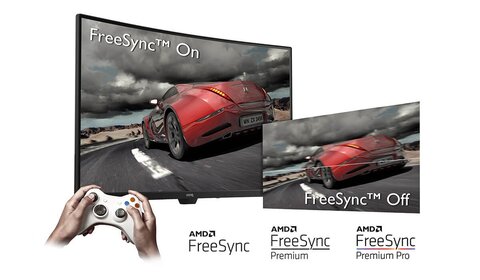
FreeSync, on the other hand, is AMD’s answer to G-Sync. Like G-Sync, FreeSync aims to provide a tear-free gaming experience by synchronizing the refresh rate of the monitor with the frame rate output of AMD graphics cards. The biggest advantage of FreeSync lies in its cost-effectiveness and wide compatibility.
Key Features of FreeSync
- Adaptive Refresh Rates: FreeSync technology allows monitors to dynamically adjust their refresh rates from as low as 30 Hz up to the maximum supported refresh rate of the display, providing a seamless experience during gameplay.
- No Additional Hardware Required: Unlike G-Sync, which requires proprietary hardware in the monitor, FreeSync uses the Adaptive Sync standard, making it more affordable and widely available. Many FreeSync monitors are competitively priced, offering great value for gamers on a budget.
- Wide Compatibility: FreeSync is supported by a wide range of AMD graphics cards and monitors, allowing more gamers to take advantage of its benefits without needing to invest in specific hardware.
G-Sync vs. FreeSync: A Comparative Analysis
Performance
When it comes to performance, both G-Sync and FreeSync deliver exceptional results. G-Sync tends to have a slight edge in terms of performance consistency, as its proprietary nature allows for more stringent quality control. However, FreeSync has made significant strides in performance, particularly with newer iterations like FreeSync Premium and FreeSync Premium Pro, which add additional features like low frame rate compensation (LFC).
Cost Considerations
Cost is a significant factor for many gamers. G-Sync monitors are generally more expensive due to the proprietary hardware required for the technology. In contrast, FreeSync monitors are often more affordable, making them a popular choice for budget-conscious gamers. If you’re looking for high performance without breaking the bank, FreeSync may be the way to go.
Hardware Requirements
Another crucial difference lies in the hardware compatibility. G-Sync is exclusively compatible with NVIDIA graphics cards, while FreeSync works with AMD GPUs. However, NVIDIA has recently introduced support for FreeSync monitors with its latest graphics cards, allowing gamers to choose from a broader selection of displays regardless of their GPU brand.
Finding the Right Resolution: 1080p, 1440p, or 4K for Call of Duty Mobile Season 10?

Choosing the right resolution for your gaming experience can significantly enhance your overall enjoyment, particularly for fast-paced games like Call of Duty.
With various options available, including 1080p, 1440p, and 4K, it’s essential to understand the differences between these resolutions and how they can affect your gameplay. In this article, we will explore each resolution’s features, benefits, and drawbacks to help you make an informed decision that suits your gaming setup.
Understanding Resolutions: A Brief Overview
Resolution refers to the number of pixels displayed on your screen, which determines the clarity and detail of the images. In gaming, higher resolutions generally provide sharper graphics, making it easier to spot opponents and appreciate the game’s visuals. Here’s a quick rundown of the three common resolutions used in gaming:
- 1080p (Full HD): This resolution measures 1920×1080 pixels and is the most popular choice among gamers. It strikes a balance between performance and visual quality, making it ideal for most gaming setups.
- 1440p (Quad HD): At 2560×1440 pixels, this resolution offers a significant upgrade over 1080p, providing crisper graphics and more detailed environments. It’s an excellent choice for gamers seeking improved visuals without the demand of 4K gaming.
- 4K (Ultra HD): With a resolution of 3840×2160 pixels, 4K delivers stunning visuals and incredibly detailed graphics. However, it requires a powerful gaming rig to maintain smooth performance, especially in competitive gaming scenarios.
The Case for 1080p: Performance and Accessibility
For many gamers, 1080p remains the go-to resolution due to its widespread compatibility and performance benefits. Most modern gaming consoles and PCs can handle 1080p without breaking a sweat, allowing for smoother frame rates and faster response times. This can be crucial in competitive games like Call of Duty, where every millisecond counts.
Additionally, 1080p is more forgiving on hardware. If you’re using a mid-range or older gaming setup, you may find that 1080p provides the best performance without compromising too much on visual fidelity. Moreover, this resolution is typically less demanding on your internet connection, ensuring smoother online gameplay, especially in fast-paced modes.
Stepping Up to 1440p: A Sweet Spot for Gamers
If you’re looking for a balance between performance and stunning visuals, 1440p is often considered the sweet spot for gamers. With more pixels than 1080p, it offers a noticeable improvement in image clarity and detail, which can enhance your overall gaming experience.
Environments in Call of Duty become richer, and character models are more defined, allowing you to immerse yourself deeper in the game.
However, keep in mind that while 1440p provides enhanced visuals, it does demand more from your hardware. Ensure that your graphics card and processor can handle this resolution efficiently to maintain optimal performance.
If you’re playing on a powerful gaming rig, 1440p can provide a competitive edge by allowing you to spot enemies and react quicker due to improved visibility.
Embracing 4K: The Pinnacle of Visual Fidelity
For those who crave the ultimate gaming experience, 4K resolution is where you want to be. With four times the pixel count of 1080p, 4K delivers breathtaking visuals that can make any game, including Call of Duty, look stunningly realistic. The details in environments and textures are unparalleled, providing an immersive experience that truly showcases the power of modern gaming technology.
However, it’s essential to note that 4K gaming requires a robust setup. You will need a high-end graphics card, a powerful processor, and ample RAM to achieve smooth gameplay at this resolution. ensure your monitor supports 4K and has a high refresh rate to maximize your gaming experience.
If your hardware can handle it, 4K can take your Call of Duty experience to a whole new level, but it may not be necessary for everyone, especially competitive players who prioritize performance over visual fidelity.
Making the Right Choice: What’s Best for You?
Choosing the right resolution for Call of Duty ultimately depends on your priorities as a gamer. If you value performance and want to maximize your frame rates, 1080p may be the best choice for you.
If you’re looking for an upgraded visual experience without sacrificing too much performance, 1440p is an excellent middle ground. Finally, if you have the hardware and want the best visuals available, 4K is the way to go, but be prepared for the demands it places on your system.
Consider your gaming habits, the capabilities of your hardware, and your personal preferences when making this decision. Each resolution has its benefits and drawbacks, so understanding what you want out of your gaming experience is key to finding the perfect fit for Call of Duty.
Best Monitors for Call of Duty: Our Recommendations
When it comes to gaming, especially in high-stakes environments like Call of Duty, having the right monitor can make all the difference. Whether you are an aspiring pro player or a casual gamer looking to enhance your experience, selecting a monitor that complements your gaming style is crucial.
Here’s our comprehensive guide on the best monitors for Call of Duty, complete with recommendations that cater to various needs and budgets.
Why a Good Monitor Matters for Gaming
Choosing a high-quality monitor is essential for an immersive gaming experience. A good gaming monitor enhances graphics, provides faster refresh rates, and reduces lag, allowing players to react swiftly in fast-paced games like Call of Duty.
With a monitor optimized for gaming, you can enjoy smoother gameplay, sharper images, and an overall competitive edge.
Key Features to Look for in a Gaming Monitor
When selecting the perfect monitor for Call of Duty, consider these key features:
- Refresh Rate: A higher refresh rate (at least 144Hz) ensures smoother visuals, which is critical in fast-paced games.
- Response Time: A low response time (1ms to 5ms) reduces ghosting and blurring, making your gameplay clearer.
- Resolution: Aim for at least 1080p (Full HD), but 1440p (QHD) or 4K can provide stunning visuals if your system supports it.
- Adaptive Sync Technology: Features like AMD FreeSync or NVIDIA G-Sync help eliminate screen tearing and stuttering.
- Screen Size and Aspect Ratio: Depending on your preference, a larger screen (27 inches or more) can provide an immersive experience, while a 16:9 aspect ratio is standard for most games.
Top Recommendations for Call of Duty Monitors
Here are our top picks for monitors that deliver exceptional performance for Call of Duty:
1. ASUS ROG Swift PG259QN
The ASUS ROG Swift PG259QN is a standout choice for serious gamers. With a blistering 360Hz refresh rate and a 1ms response time, this monitor ensures fluid gameplay and minimal input lag. The NVIDIA G-Sync technology provides a tear-free experience, making it ideal for competitive gaming.
The vibrant IPS panel offers stunning color accuracy and wide viewing angles, allowing you to spot enemies from any position.
2. Dell Alienware AW2521H
For those who crave high-end gaming, the Dell Alienware AW2521H is a premium option. Featuring a 360Hz refresh rate and a 1ms response time, this monitor is built for speed.
Its 25-inch screen with a 16:9 aspect ratio provides a comfortable viewing experience. With NVIDIA G-Sync support and HDR, you can expect vibrant colors and deep contrasts, enhancing your gameplay visuals in Call of Duty.
3. Acer Predator XB273U GX
The Acer Predator XB273U GX is a versatile choice that balances performance and price. With a 144Hz refresh rate (overclockable to 180Hz) and a 1ms response time, this monitor is perfect for fast-paced action.
The 27-inch QHD display ensures stunning detail, while G-Sync compatibility eliminates screen tearing. This monitor is also ergonomically designed, allowing for height and tilt adjustments to enhance comfort during long gaming sessions.
4. LG 27GN950-B
If you’re looking for a monitor that offers both high performance and stunning visuals, the LG 27GN950-B is a fantastic option. This 27-inch 4K monitor features a 144Hz refresh rate and a 1ms response time, providing both clarity and fluidity.
Its IPS panel supports HDR600, offering vibrant colors and impressive contrast ratios. With NVIDIA G-Sync, you can enjoy smooth gameplay in Call of Duty without worrying about lag or tearing.
5. ViewSonic XG2405

For gamers on a budget, the ViewSonic XG2405 offers excellent value. This 24-inch monitor features a 144Hz refresh rate and a 1ms response time, making it suitable for competitive gaming.
The Full HD resolution ensures clear visuals, while FreeSync technology helps eliminate screen tearing. With its affordable price point and solid performance, the XG2405 is a great entry-level monitor for Call of Duty enthusiasts.
Budget Considerations: How to Buy a Gaming Monitor Without Breaking the Bank
When it comes to elevating your gaming experience, one of the most crucial components is your monitor. A high-quality gaming monitor can make all the difference in terms of visuals and responsiveness.
However, with a vast array of options available, purchasing a gaming monitor can quickly become overwhelming, especially when you’re trying to stay within a budget.
In this article, we’ll explore how to buy a gaming monitor without breaking the bank while ensuring you get the best value for your investment.
1. Understand Your Needs
Before diving into the world of gaming monitors, it’s essential to assess your gaming habits and requirements.
Ask yourself what type of games you play most frequently. Are you into fast-paced shooters that require high refresh rates, or do you prefer immersive single-player adventures that benefit from stunning graphics?
Understanding your gaming needs will help you prioritize the features that matter most, such as resolution, refresh rate, and panel type.
2. Set a Realistic Budget
Once you know what you need, the next step is to set a realistic budget. Gaming monitors can range from budget-friendly options to high-end models that cost a small fortune. Determine how much you’re willing to spend and stick to that figure.
Keep in mind that you can find excellent monitors in various price ranges. Having a clear budget will guide your search and help you avoid impulse purchases that could lead to overspending.
3. Look for Sales and Discounts
Shopping during sales events can significantly reduce the cost of your gaming monitor. Major retail holidays, such as Black Friday, Cyber Monday, or back-to-school sales, often feature substantial discounts on electronics.
keep an eye on seasonal promotions and clearance sales at local stores or online retailers. Signing up for newsletters from your favorite tech stores can also provide you with information about upcoming deals and exclusive discounts.
4. Consider Refurbished or Open-Box Monitors
If you’re looking to save even more, consider purchasing a refurbished or open-box monitor. Refurbished monitors are typically returned items that have been tested and repaired by the manufacturer, offering a nearly new product at a lower price.
Open-box items are products that have been returned but remain in excellent condition. These options can provide significant savings while still delivering a quality gaming experience.
5. Evaluate Essential Features
When evaluating monitors, focus on essential features that align with your gaming needs. Key specifications to consider include:
- Resolution: Aim for at least Full HD (1920×1080) for clarity, but consider 1440p (2560×1440) or 4K (3840×2160) for more detailed visuals if your budget allows.
- Refresh Rate: A higher refresh rate (60Hz, 144Hz, or 240Hz) results in smoother gameplay, especially in fast-paced games. For competitive gaming, aim for at least 144Hz.
- Response Time: Lower response times (measured in milliseconds) reduce motion blur and ghosting, enhancing your gaming experience. Look for monitors with a response time of 5ms or lower.
- Panel Type: There are three main types of panels: TN (Twisted Nematic), IPS (In-Plane Switching), and VA (Vertical Alignment). TN panels are generally cheaper and have faster response times, while IPS panels offer better color accuracy and viewing angles. VA panels provide excellent contrast. Choose based on your gaming preferences and budget.
6. Read Reviews and Comparisons
Before making a purchase, it’s wise to read reviews and watch comparison videos of the monitors you’re considering.
User reviews can provide insights into the performance and reliability of a monitor, while comparison videos can highlight the differences between similar models. Take note of any recurring issues or praises regarding specific monitors. This research will empower you to make an informed decision.
7. Don’t Forget About Warranty and Customer Support
Lastly, always check the warranty and customer support options provided by the manufacturer. A good warranty can protect your investment in case of defects or issues that arise after purchase.
Look for manufacturers known for excellent customer service, as this can make a significant difference if you need assistance or repairs down the line.
Setting Up Your Monitor for Optimal Call of Duty Gameplay
In the fast-paced world of Call of Duty, having the right monitor setup can significantly enhance your gaming experience.
A well-configured display not only improves your visual clarity but also boosts your responsiveness, giving you an edge in those intense firefights. Let’s dive into the essential aspects of setting up your monitor for optimal gameplay.
Choose the Right Monitor Size
The size of your monitor plays a crucial role in your overall gaming experience. For Call of Duty, a monitor between 24 to 27 inches is generally recommended. This size offers a good balance between visibility and immersion without overwhelming your peripheral vision.
If you have the space and budget, consider a larger monitor, but ensure you’re seated at an appropriate distance to avoid straining your eyes.
Opt for a High Refresh Rate
When it comes to competitive gaming, a high refresh rate is essential. A monitor with a refresh rate of 144Hz or higher allows for smoother motion and better frame rates, which is critical during fast-paced action sequences. This feature helps reduce motion blur and makes your aiming more precise, ensuring you can react quickly to your opponents.
Consider the Response Time
Response time measures how quickly a pixel can change from one color to another, impacting how smoothly images transition on your screen. For Call of Duty, look for a monitor with a response time of 5ms or lower. A faster response time minimizes ghosting and blurring, which can be especially beneficial in critical moments when split-second decisions are crucial.
Resolution Matters
The resolution of your monitor affects the clarity and detail of the graphics. For an immersive experience in Call of Duty, a 1080p (Full HD) resolution is the minimum you should consider.
However, if your gaming rig can handle it, upgrading to a 1440p (QHD) or 4K (UHD) display will provide stunning visuals and enhance your overall gaming experience. Just ensure your graphics card can support the higher resolution to maintain smooth gameplay.
Calibrate Your Monitor Settings
To achieve optimal visuals, calibrate your monitor settings. Adjust the brightness, contrast, and color settings to suit your preferences and the game’s requirements. Aim for a brightness level that allows you to see dark areas without washing out bright ones. Increasing the contrast can enhance detail, making it easier to spot enemies in the game.
Enable Game Mode
Many modern monitors come with a Game Mode setting designed to optimize performance for gaming. Activating this mode can enhance color vibrancy, reduce input lag, and adjust response times to improve your gameplay. Check your monitor’s menu for this option and enable it when playing Call of Duty for the best experience.
Use Proper Monitor Positioning
The positioning of your monitor is vital for comfortable and effective gaming. Ensure that the top of your monitor is at or slightly below eye level. This alignment helps reduce neck strain during long gaming sessions. Additionally, position your monitor at an arm’s length away to maintain a comfortable viewing distance, preventing eye fatigue.
Invest in G-Sync or FreeSync Technology
Screen tearing can be a frustrating issue in gaming. To combat this, consider a monitor with G-Sync (NVIDIA) or FreeSync (AMD) technology. These features synchronize the refresh rate of your monitor with your graphics card’s frame rate, resulting in smoother visuals and eliminating tearing. This technology is particularly beneficial during fast-paced Call of Duty matches, ensuring that your gameplay remains fluid.
Ensure Good Lighting Conditions
Lighting can significantly impact your gaming experience. Avoid glare from windows or lights hitting your screen, as this can obscure your view. Ideally, your gaming setup should have controlled lighting. Use ambient light sources or bias lighting behind your monitor to reduce eye strain and enhance focus on the game.
Regular Maintenance and Updates
Lastly, keep your monitor and graphics drivers updated. Regularly check for firmware updates for your monitor, as manufacturers often release enhancements that can improve performance. Additionally, ensure your graphics drivers are up to date to maintain compatibility and performance with the latest games, including Call of Duty.
Conclusion
In summary, investing in the right monitor for Call of Duty is crucial for enhancing your gameplay. By prioritizing features such as refresh rate, response time, resolution, and ergonomic design, you can create an immersive and responsive gaming environment.
As the gaming world continues to evolve, staying ahead of the curve with the right equipment will ensure you not only meet the challenges of the battlefield but also enjoy every moment spent within it.
So, take the time to research and choose a monitor that fits your needs; your Call of Duty experience will thank you for it!



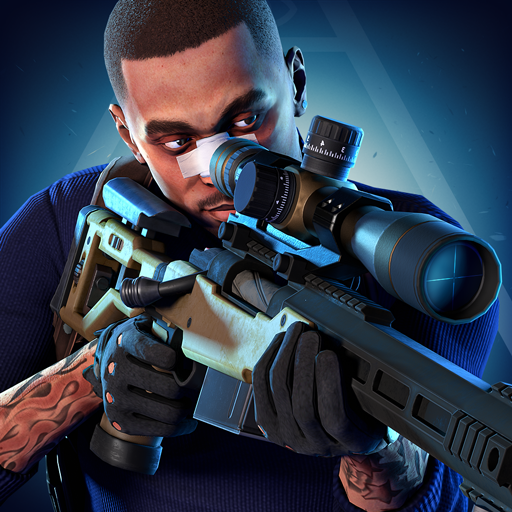
- Updated:
- Price$0
- Installs 1 000 000 000
- Rated for 18
On our site you can easily download latest version Call of Duty Mobile! All without registration and send SMS!
